If you've thought about starting a dropshipping store, you've probably wondered: “Can people really make money with this?”
The answer is yes, but only if you do it right.
In this article, I'll walk you through three real-life dropshipping store case studies that prove it's possible to build a successful online business, even in a competitive market.
You'll learn what these stores sell, how they drive traffic, how much money they make, and most importantly, what makes them work.
We'll break down their websites, marketing strategies, and customer experience to find out exactly how they've achieved success.
Let's dive in!
Disclaimer: The traffic, revenue, and conversion figures shared in this article are estimates based on data from tools such as Sell The Trend, WinningHunter, and Similarweb. Actual results may vary.
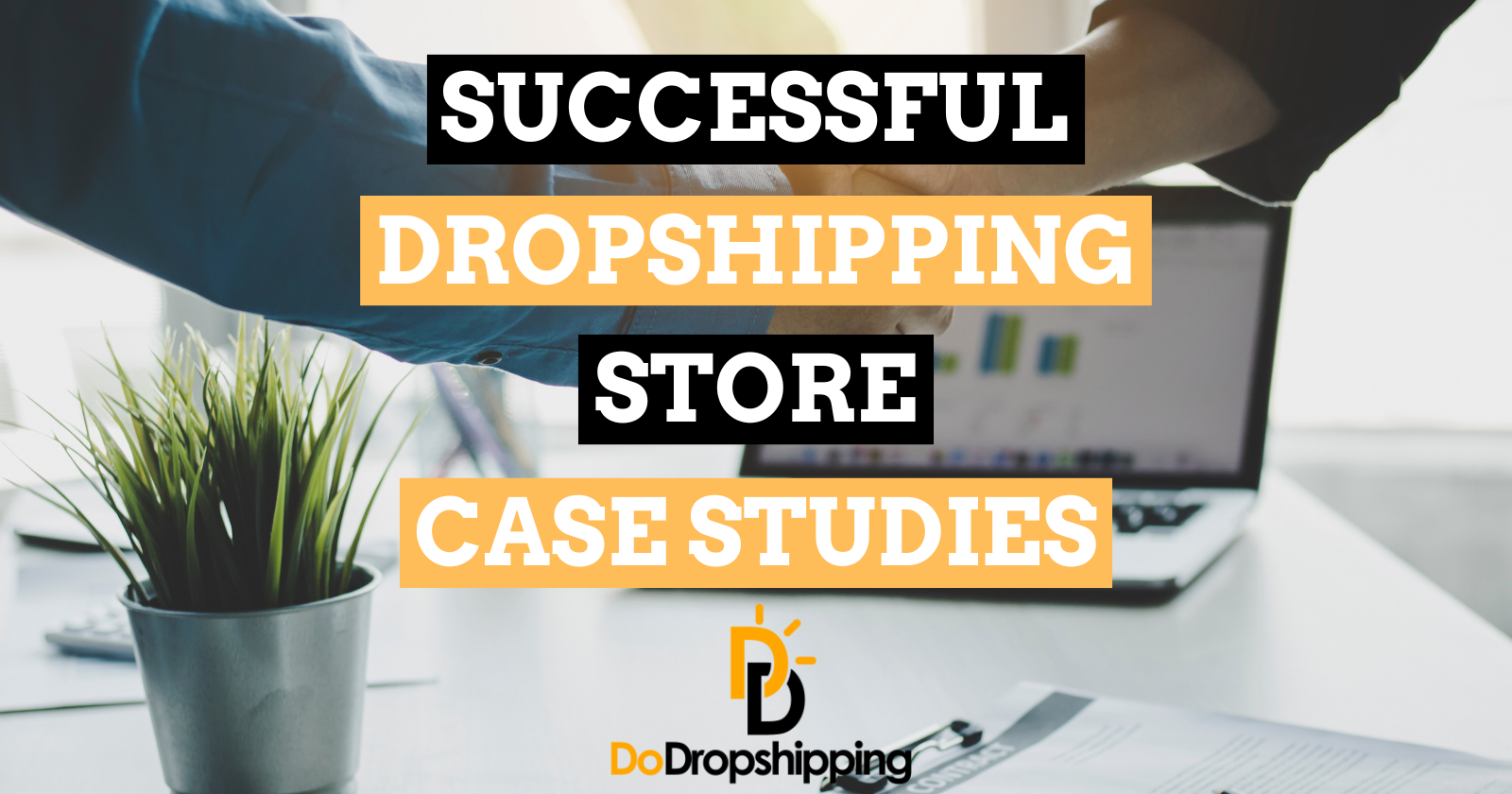
Run your dropshipping store on Shopify
Free 3-day trial + $1/month for 3 months
- Connect dropshipping apps and agents in a few clicks
- Automate orders, tracking, and payments in one dashboard
- Built to scale from first test product to full brand
No card to start. Cancel anytime.
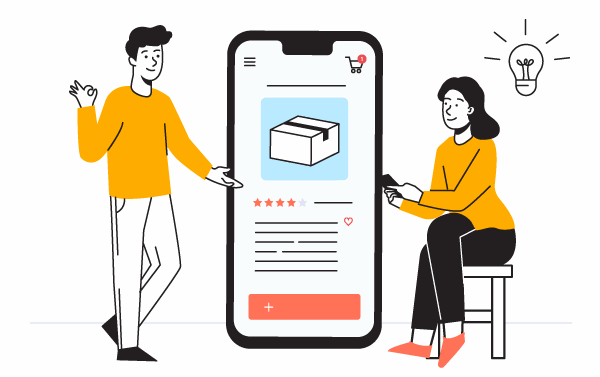
Case study #1: Old Money
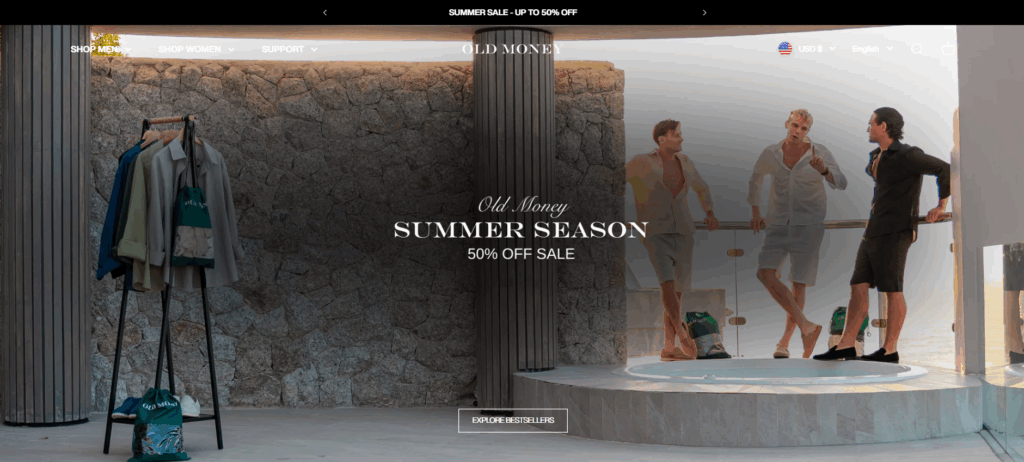
| Founded date | May 2024 |
| Niche | Fashion |
| Monthly traffic | 504,000 |
| Revenue | USD$750,000 |
| Conversion rate | 2,2% |
| Top traffic source(s) | 1. Direct (32%) 2. Paid (30%) 3. Social (21%) |
With a launch in May 2024, Old Money is a fashion brand that hit the ground running.
It built its entire identity around a trending aesthetic: the “old money” look.
You've probably seen it on TikTok or Instagram, people wearing clean, classic outfits that look expensive but don't scream for attention.
Think about suede loafers, tailored blazers, and neutral tones.
Old Money took that vibe and made it accessible to the masses.
Instead of charging high-end designer prices, they offered affordable pieces that still look elegant and high-quality:

And that clear brand vision helped them grow fast.
In just a few months, the store reached over 500,000 monthly visitors and around $750,000 in monthly revenue. That's an incredibly strong start for any new ecommerce store, especially in the competitive fashion niche.
Success factors
Their success didn't happen by accident.
Let's take a closer look at the key strategies that made it all happen.
1. Riding the “Old Money” trend at the perfect time
Old Money's first big win? Timing.
In 2023 and 2024, the “old money aesthetic” exploded across TikTok, Pinterest, and Instagram.
Old Money jumped on this trend exactly when it was gaining momentum:
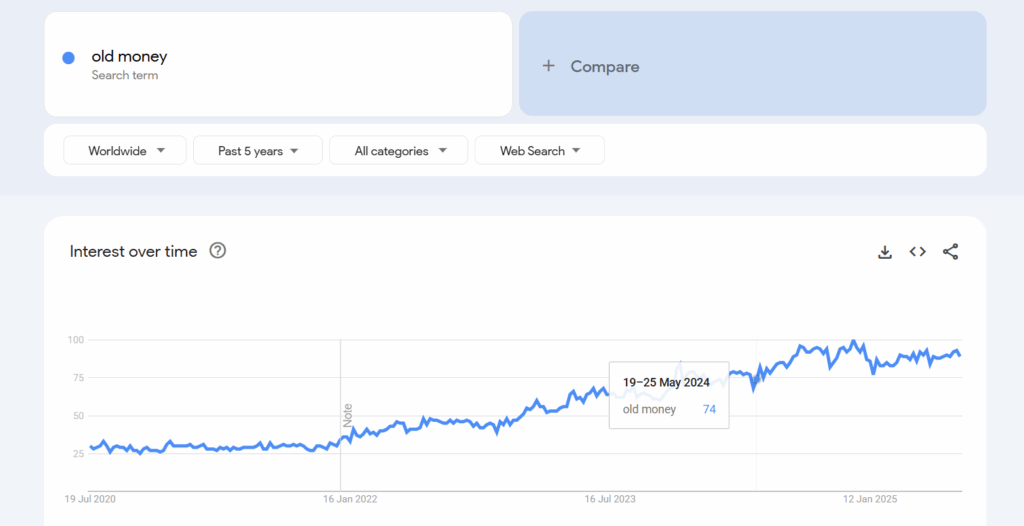
But they didn't just sell clothes, they sold a lifestyle.
Their website, product photos, and even the fonts they use all reflect this calm, classy, and elegant vibe. This makes their brand feel instantly familiar to people already searching for that look.
And instead of making clothes that cost hundreds, Old Money kept prices affordable.
That made it easy for young shoppers to say “yes” without second thoughts. It also helped the brand stand out from expensive competitors.
Takeaway for you: Trends can be powerful, but only if you act fast. When you see a style, idea, or product category gaining traction, think about how you can offer it in your own way, before the wave passes.
Old Money made their online store feel like a luxury boutique.
From the moment you land on their homepage, everything feels clean, simple, and elegant.
No loud colors and no clutter. Just beautiful photography, clear categories, and confident headlines like “Timeless Class. Affordable Price.”
It immediately tells you what they're about.
Their product pages are just as polished. Each item has high-quality images (often on models), detailed descriptions, and size guidance that feels thoughtful, not rushed:
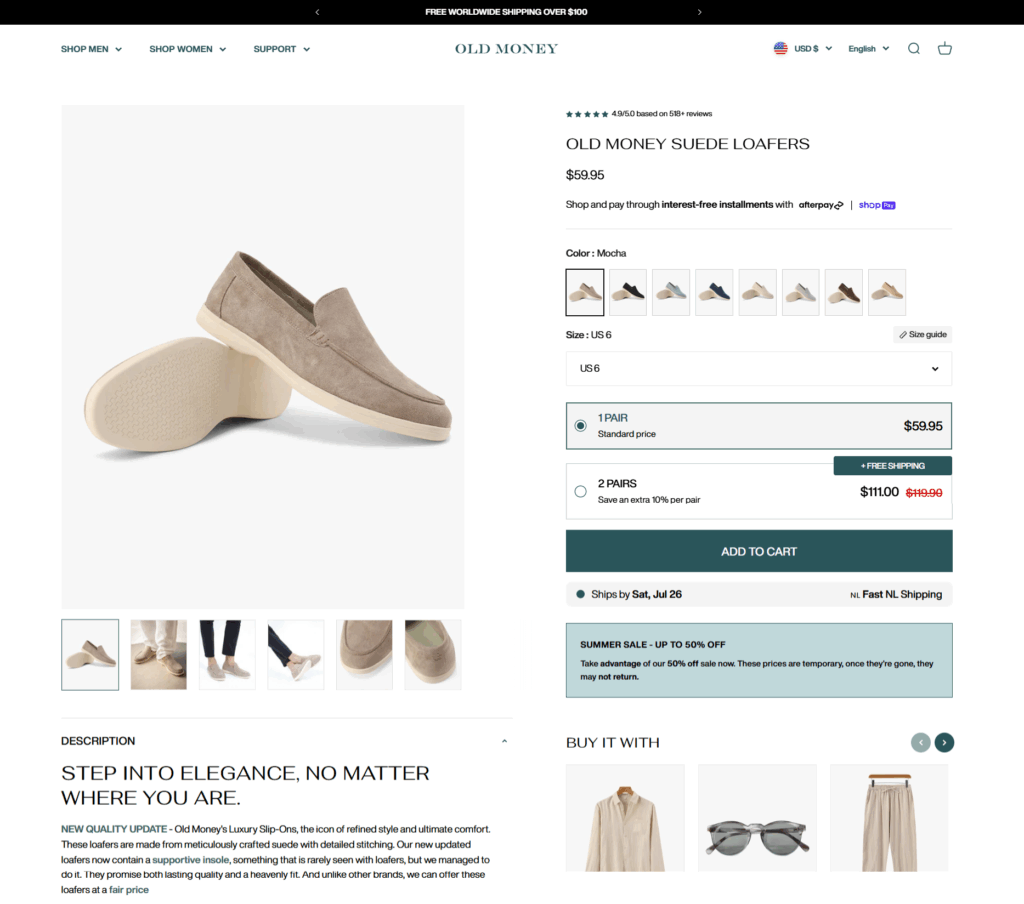
There are trust-building touches, too, like reviews, shipping info, and return policies placed right where customers can see them.
The shopping experience is also smooth. There's free shipping banners, limited-time discounts, and a clean checkout process with few distractions.
Everything is built to make the customer feel confident and comfortable buying.
All of this creates a strong sense of trust and value.
Even if the clothes are affordable, the site makes them feel expensive.
Takeaway for you: Don't underestimate your website's “vibe.” A strong design doesn't just look good, it builds trust, keeps people browsing, and helps turn visitors into buyers. Even small things like good photos, spacing, and clear CTAs can make a big difference.
3. Multi-channel marketing
Old Money doesn't just rely on one traffic source. Instead, they show up everywhere their audience is.
They focused heavily on three main channels: direct traffic, paid ads, and social media. Let's break that down:
- Direct traffic (32%) means a lot of people are typing in “Old Money” and seeing their store pop up. That's a big advantage of having your brand name associated with such a popular keyword:

- Paid traffic (30%) likely comes from platforms like Meta (Facebook and Instagram), where Old Money runs ads. Their ads are usually clean and focused on aesthetic, just like the brand itself:

- Social traffic (21%) comes from platforms like TikTok and Instagram. Old Money has leaned into short-form video trends that show outfit inspiration, day-in-the-life clips, and “Old Money looks for less.”
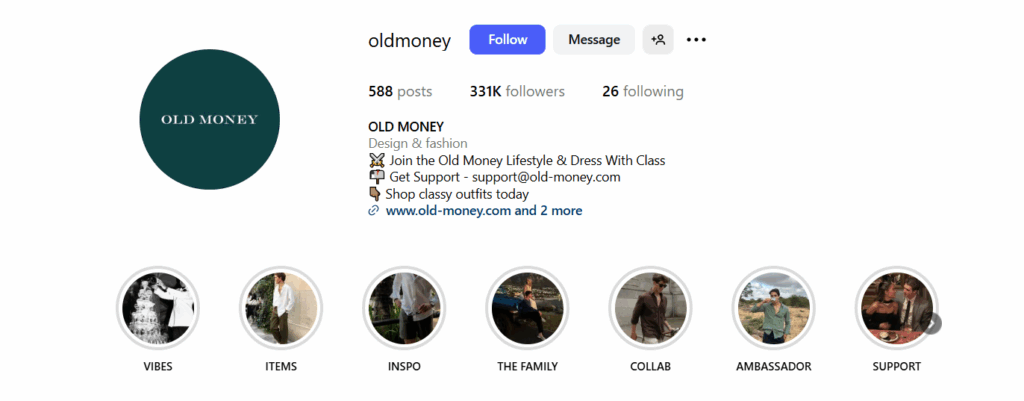
They also run giveaways, ambassador programs, and seasonal sales to keep people coming back.
In short, they actively put the brand in front of the right people again and again.
Takeaway for you: Don't depend on one traffic source. Use paid ads to get quick attention, social content to stay relevant, and strong branding to turn visitors into returning fans. The more channels you use well, the more chances you have to grow.
Case study #2: BOOMBA

| Founded date | May 2021 |
| Niche | Bra inserts |
| Monthly traffic | 211,000 |
| Revenue | USD$1,000,000 |
| Conversion rate | 6,6% |
| Top traffic source(s) | 1. Direct (39%) 2. Organic (25%) 3. Paid (20%) |
Next up is a brand that solved a very real problem, and turned it into a million-dollar business.
BOOMBA makes sticky bra inserts that actually work.
If you've ever struggled with strapless outfits, backless dresses, or bras that just don't stay in place, BOOMBA's products are designed for you. Their inserts give lift, shape, and coverage, without uncomfortable wires or annoying slipping:

The best part is that they're reusable and available in a wide range of cup sizes and skin tones. That's a huge deal in a market where most options are either one-size-fits-all or poor quality.
Today, BOOMBA sees over 200,000 monthly visitors, brings in about $1 million in revenue per month, and has an estimated 6.6% conversion rate. That's far above average!
Success factors
Let's check out what makes BOOMBA so successful.
1. Solving a real problem with a unique product
BOOMBA's biggest strength is that they created something people were actively looking for, and made it better than anything else out there.
Many women have struggled with sticky bras or inserts that just don't stay in place. They slip, they lose shape, and they often don't fit well.
BOOMBA looked at all those frustrations and designed a product that fixes them:
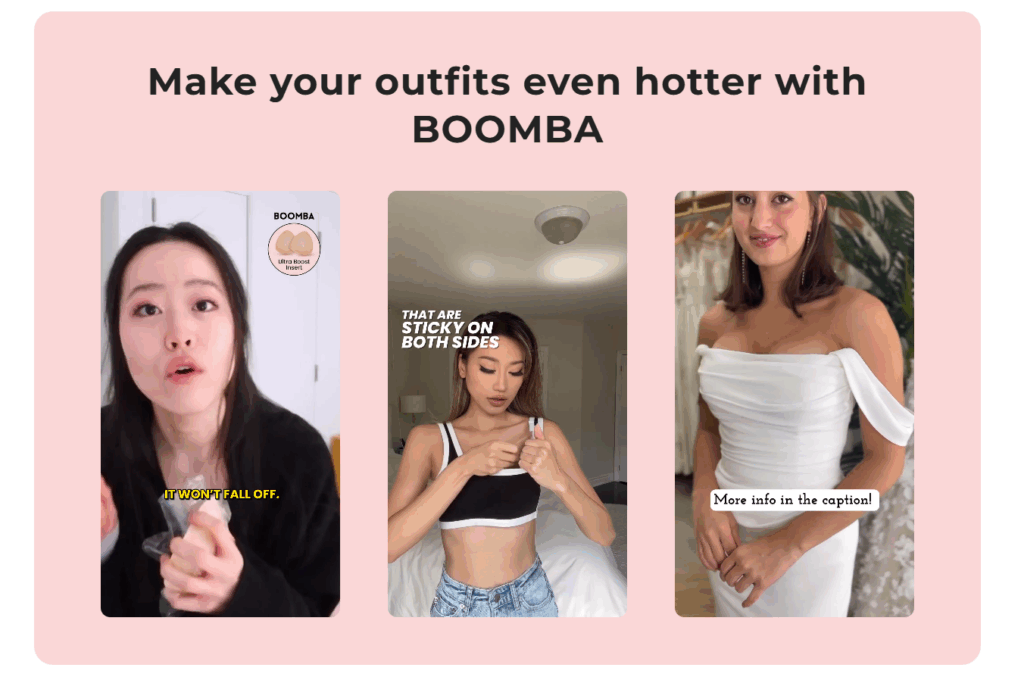
Their double-sided adhesive inserts stick both to your skin and your clothes, so they stay put even during long days.
What's more, they made their products reusable (up to 40-50 wears), comfortable, and available in many sizes and skin tones. That really matters, especially when most competing products are one-size-fits-all or made for smaller cup sizes only.
BOOMBA didn't just launch a better sticky bra, they launched a whole solution that works for real people with real bodies.
It feels thoughtful, tested, and trustworthy.
And that's exactly why so many customers are willing to buy and even come back for more.
Takeaway for you: If you want your dropshipping store to succeed, focus on solving a specific problem. Make sure your product actually helps people. When you give customers something that works, and works better than the alternatives, they'll do the marketing for you.
BOOMBA doesn't just rely on ads, they also let their happy customers and big media brands do the talking.
From the beginning, BOOMBA focused on building trust through real-world results and visibility.
Their inserts quickly became popular with brides, influencers, and stylists.
Soon, BOOMBA was featured in major outlets like Vogue, Glamour, Cosmopolitan, and ELLE:
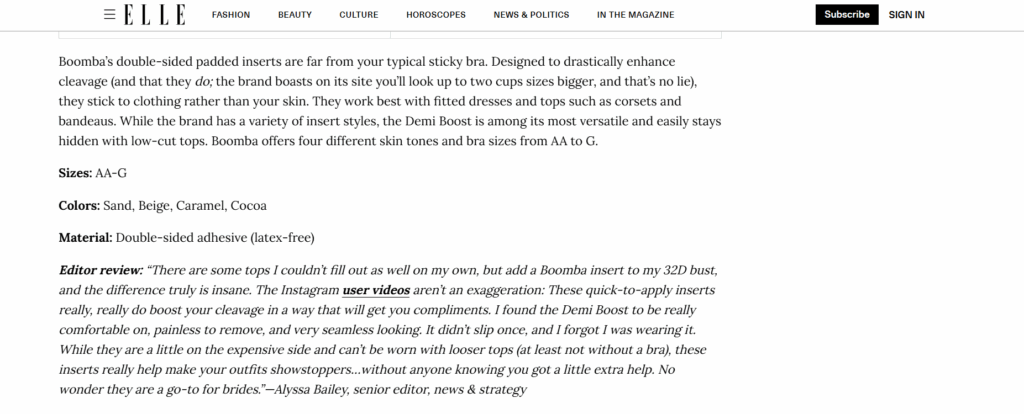
BOOMBA also actively shares user-generated content (UGC) from real customers. You'll see before-and-after shots, fit demos, and styling tips all over their website and social channels:
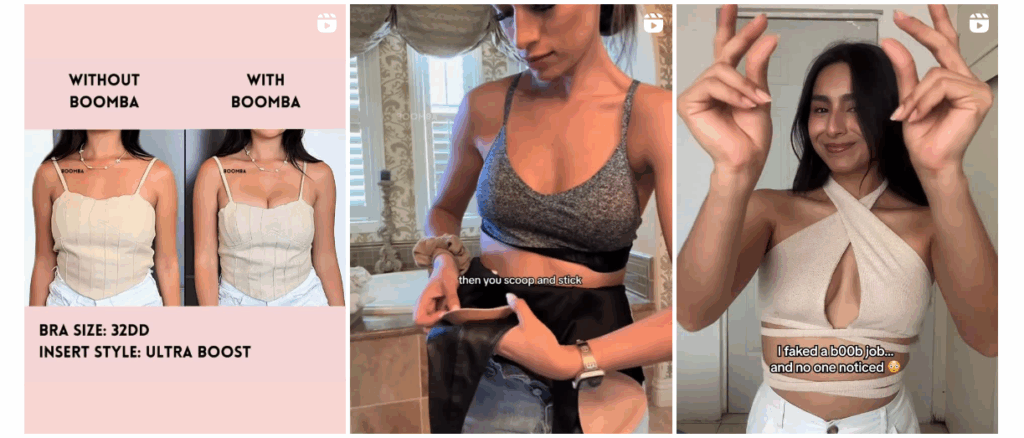
This kind of content builds trust and relatability, because it shows how the product works in real life, not just in a studio photo.
All of this creates a powerful feedback loop: happy customers share their experiences → more people see the results → new customers buy → and the cycle continues.
Takeaway for you: People trust people. The more proof you can show that your product works, the more confident new visitors will feel. Don't be shy about showing off your wins!
Case study #3: Hike Footwear

| Founded date | January 2024 |
| Niche | Footwear |
| Monthly traffic | 1,622,000 |
| Revenue | USD$2,700,000 |
| Conversion rate | 2,4% |
| Traffic source(s) | 1. Direct (44%) 2. Social (31%) 3. Organic (15%) |
Some brands grow slowly. Others take off like a rocket.
Hike Footwear is one of those rocket stories.
Hike sells barefoot-style shoes. These are comfortable, wide-fit sneakers designed to let your feet move naturally:
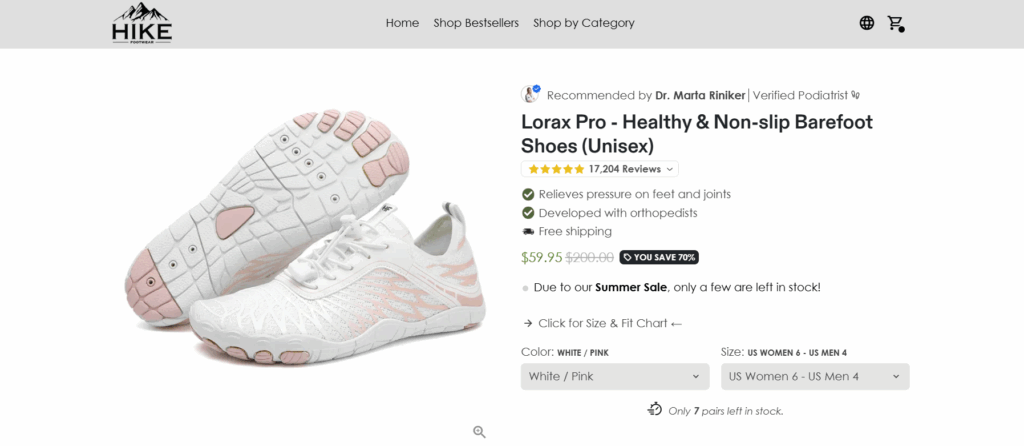
They're made for people who care about foot health, posture, comfort, and freedom of movement.
In just months, Hike exploded in popularity. The brand now brings in over 1.6 million monthly visitors and generates an estimated $2.7 million in revenue per month.
They grew by offering something unique: shoes that solve pain problems, look good, and support a healthy lifestyle.
Their site, product pages, and marketing all focus on how the shoes help real people, not just how they look.
This is a great example of how focusing on customer needs and telling your story the right way can help a new brand stand out and scale fast.
Success factors
Let's take a closer look at what's working behind the scenes.
1. Solving pain (literally)
Hike's first success factor is simple but powerful: they help people feel better.
Most shoes are designed for style, not for comfort or health.
That can lead to real problems like sore feet, bad posture, and even long-term issues like bunions or plantar fasciitis.
Hike took a different approach and started selling shoes that are built around barefoot principles.
These shoes have wide toe boxes, flexible soles, and zero-drop heels. In other words, they let your feet move naturally, the way they're meant to.
This solves a real problem for a lot of people. They reduce pain, improve posture, and make walking or standing more comfortable:
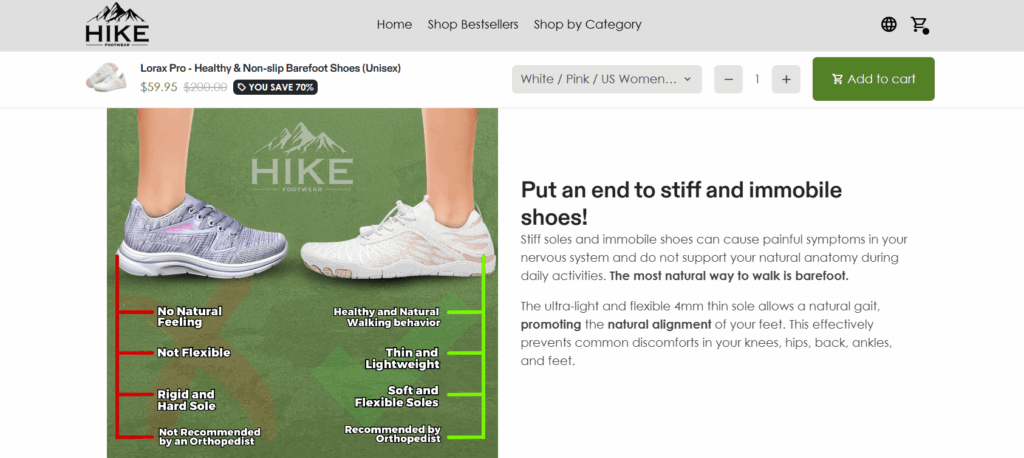
As you can see, Hike doesn't assume customers already understand the concept. They teach why this shoe style matters, and that builds trust.
Takeaway for you: If your product can improve someone's daily life, even in a small way, make that the heart of your message. Hike grew fast because they didn't just sell shoes. They sold comfort, relief, and better movement. And that's something people are willing to pay for.
2. Mission-driven branding
Another thing that makes Hike Footwear stand out is that they're selling a mission.
From the first visit to their website, you can tell that Hike cares about more than profits.
They care about helping people move better, protecting the environment, and building a more sustainable future.
Their shoes are made with eco-friendly materials, and for every four pairs sold, they plant a tree in partnership with an environmental nonprofit:
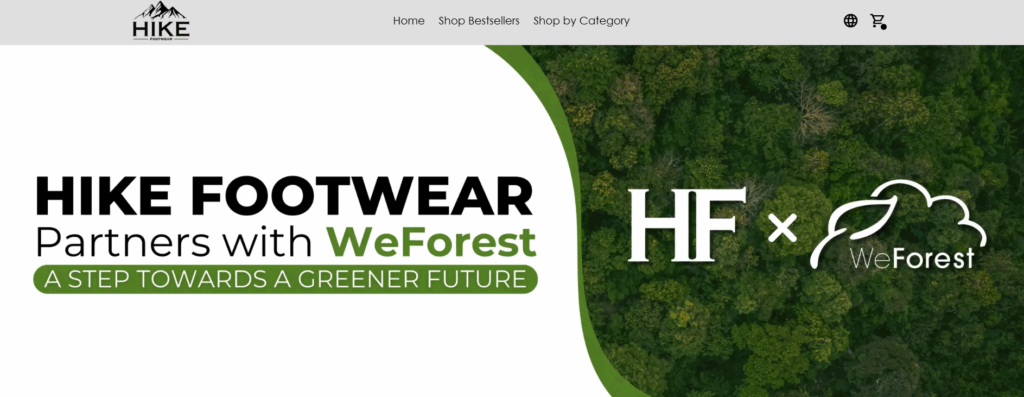
Takeaway for you: A strong mission adds meaning to your brand. If people feel good about what you stand for, they're more likely to trust you and come back.
Turn this guide into an AI checklist
Click your favorite AI tool below to get a short summary and step-by-step checklist based on this article.Prefer ChatGPT? Open this guide in ChatGPT with a pre-filled prompt (most readers start here).
Final thoughts
As you've seen from these dropshipping store case studies, success doesn't come from luck, it comes from strategy, timing, and understanding your customer.
- Old Money grew fast by riding a trend with the right look and pricing.
- BOOMBA turned a clever product into a trusted brand with social proof.
- Hike Footwear built a movement around comfort, wellness, and purpose.
Each brand did something different, but they all followed the same core principles:
- They solved real problems.
- They created a strong, clear brand.
- And they made it easy for customers to say “yes.”
You don't need a million-dollar budget. You just need a smart offer, clear messaging, and a customer-first mindset.
Good luck out there!
Want to learn more about dropshipping?
Ready to move your dropshipping store to the next level? Check out the articles below:
- The Ultimate Dropshipping Guide for 2025 (From A to Z)
- The 16 Best Shopify Apps for Successful Dropshipping Stores
- 23 Most Successful Shopify Dropshipping Store Examples | Inspiration
Plus, don't forget to check out our in-depth guide on how to start dropshipping here!











